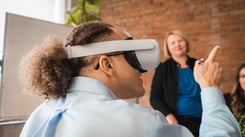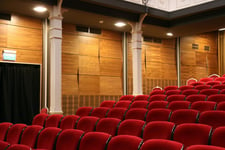As the architectural industry is relying more and more on digital tools, it is important to maintain your place as a digital leader and investigate technologies like VR, AR, and those that are less often adopted and presented to make sure your firm doesn’t fall behind the competition.
Architects using virtual reality are finding unique ways to adopt the technology in fold it into their workflow. Architects who have not yet made this change put themselves at a disadvantage by not offering their clients similar experiences and previews of their designs. Below we will examine why it is important for architects to consider incorporating VR into their business and give some current-day examples of how architects are using virtual reality.
Why are Architects Using Virtual Reality?
While many think of Virtual Reality as an entertainment and gaming tool, many architects use it as a presentation tool. Consider this: the main purpose of virtual reality is to create large-scale virtual environments, that may not exist yet, for people to explore and feel as if they've been actually transported into. This can be a powerful tool for architects to use to transport people into the visions of their designs for their office buildings, hospitals, hotel lobbies, etc. What better preview could you get than actually walking through the halls of the building that you're looking to build?
This also solves one of the main problems with traditional visualization methods. Many people working with architects don't have traditional design backgrounds. It's hard for them to translate the meaning from line drawings and sketches to really understand the true scale and scope of what a project will look like. Using virtual reality, communicating scale couldn't be easier. To understand the scale of something, you simply look around. It's all accurate and to scale based on the design they used. Even if a virtual reality environment isn't as highly rendered or visually pleasing as high-quality 2D render, the fact that you can still see it in three dimensions and get that sense of scale is a pretty unbeatable feeling.
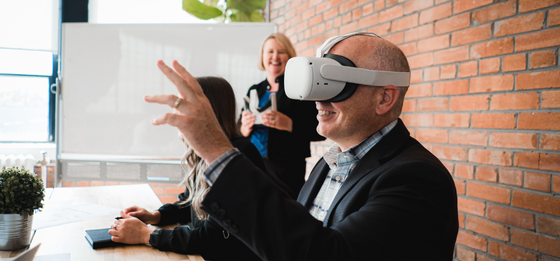
It also adds an emotional connection to it because it's perceived as something real when they have that wow moment of entering virtual reality. It's memorable and will make you stick out of their minds if you're including VR as part of a pitch or bid.
It is becoming easier for architects to create virtual reality environments on their own. For example, Yulio’s Revit to VR plugin Can turn a Revit project into a virtual reality experience with just a few clicks. It doesn't require a lot of unnecessary training. And with the use of cloud computing, you can be done quickly without bogging down your computer with unnecessary stress.
Let's dive into some examples of how architects are using it within their own firms and practices.
Utile
Utile is a unique organization in Canada that is a not-for-profit business that builds and rents apartments for students working to adapt to the needs of living on their own. There's a significant lack of affordable student housing in Quebec, and they're looking to solve this issue with their creative designs.
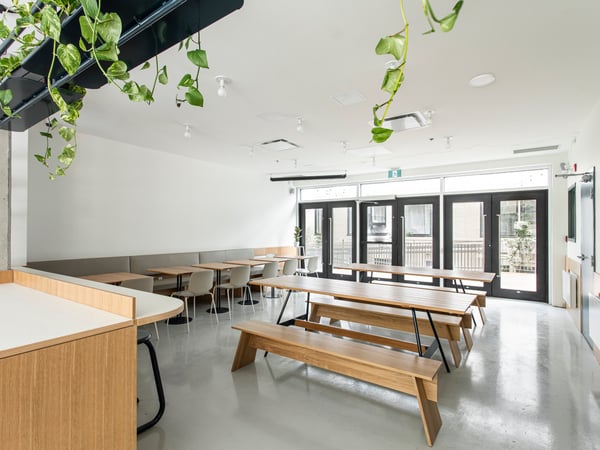
An example of what Utile is creating for student living (Photo credit: Utile)
Utile uses VR during a couple of different phases of their workflow process. They have said they use VR to collect input during their planning phases to see if their designs properly meet the needs of students today. They allow people to see a preview of the final product and then they use that feedback to influence the final design. They also use it to allow people to visit the apartment during the leasing phase. Instead of having to deal with scheduling multiple visitors, they simply have set up a 360-degree virtual reality tour on their website. All the different design projects. This is a great way to see the spaces they have included in their buildings and it allows students to plan what they can bring and how they can fit into their new space.
Diamond Schmitt Architects
Since 1978, Diamond Schmitt Architects have been designing award-winning buildings across the world, consistently looking at sustained building in their designs and using innovative new technologies to further their client satisfaction. In recent years, Diamond Schmidt worked with Ingenium, Canada’s Museum of Science and Technology. They're working to add a new building called the collection and Conservation Center to house many objects in their science and technology collection. Consolidating that many Artifacts in one building was a very hard concept to conceive. They had to accommodate a multitude of artifacts, including agricultural tools, snowmobiles, space probes, trains, etc.
Because all these objects range in such different sizes and shapes, the team had trouble visualizing just how big these objects would be. And so they turned to VR to help themselves visualize the scale and scope of these objects so they could build and design the spaces around them. It allowed them to talk with their client about things in their perspectival manner and captured scale in a much better way than solely using a 2D drawing. VR not only helped both the architects understand the scale scope of the project but also helped better communicate it to their clients, therefore minimizing any communication issues, And providing a better preview of what the final project would look like.
Stantec
Stantec is an architecture firm founded in 1954, And today, the Stantec community has approximately 26,000 employees working in over 400 locations across the world. They were recently named one of the most sustainable companies in the world in recent years. Stantec uses VR in the same ways as others do to immerse people in the preview of the bill before it's finished. However, they also use it with end users, people who are currently using the building to To further their understanding of the project from a functionality standpoint. They've worked on some unique buildings. Such as the San Ysidro land port of entry in California.
Due to the nature of the project, the building had to be built in such a way as to be secure and meet the technical standards for a major border crossing. To ensure they were meeting these needs, they had a security audit done before the project was even finished with the use of VR. They were able to guide the security auditor through their project and explained how they were able to meet the requirements for the building.
How Will You Use VR?
These examples just scratch the surface of how VR can be used within the architecture industry. Think of the different ways you could repurpose VR content for your marketing teams, to share with decision-makers, and gain a further understanding of your own projects. With both the affordability and accessibility of virtual reality increasing day over day. Now is the time to consider if you should have VR within your own architecture business.
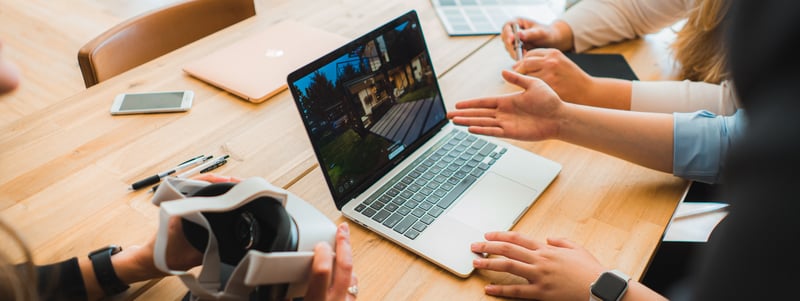
At Yulio, we've developed a program that can help you create, enhance and present your architecture, designs, and projects to your clients with a clear understanding. And with the tools we developed, such as our plugins, collaboration tools, and cloud computing services, You tried to make things as easy as possible for you to incorporate VR into your own workflow so that you can start taking advantage of this technology today.
Want to learn more about how Yulio can help you present VR versions of your architecture projects? Check out our case study from Gensler Denver, and how architect Alex Garrison discusses several projects around Denver and how VR influenced them. Also, check out our product tour to learn more about the Yulio product.



